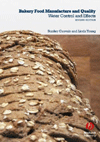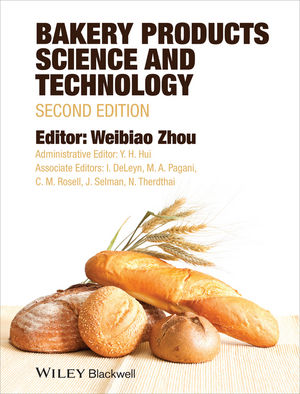
Today's Conveyor Technology: Comparing Horizontal Motion, Vibratory Conveying
Conveying in the food industry has become more sophisticated than simply moving product from point A to point B. System layouts, accumulation, feed modulation, product diverting methods, sanitation, operator safety, cross-contamination, sustainability, reliability, energy savings and product quality control are just a few considerations to keep in mind when upgrading a conveyor or ordering a new line.Fortunately, many of these issues can be addressed by choosing between two basic methods of moving product-vibratory or horizontal motion conveying. Exploring the pros and cons of each approach will help you determine which is right for your operation today and in the future.
Feel the vibrations
Vibratory conveyors move product by “bouncing” it along the pan. Different magnitudes of amplitude (vertical lift) and frequency (number of times product is pitched forward each minute) produce different product travel rates.
Vibratory conveyors use two basic drive types-electromagnetic, which typically produce short amplitude (lift) and high-frequency (speed) movements, and mechanical, which are available in direct or indirect designs. Frequencies are infinitely variable, although a range of 20-30 Hz and amplitudes of 3-5 mm are commonly used.
Short amplitude/high frequency is best for light, easy-flowing products such as snack foods, particularly when bed depths and product weights are limited. Normal travel rates are 25–30 ft. per minute. Applications include conveying, spreading and fines removal.
Mechanical drives use the opposite set of motions. Long amplitudes up to 13 mm and low frequencies of 11–14 Hz are ideal for conveying heavy or sticky products. These drives are useful for high product throughputs spreading laning and sorting.
Direct and indirect variations of mechanical drives deliver fixed-speed conveying and are suited for different applications. For example, direct drives are best for sorting, grading and bi-directional conveying, whereas indirect drives excel in product transfer, dewatering, spreading, laning and fines removal.
Because they bounce product, vibratory conveyors offer the following advantages:
• Vertically segregate product pieces, allowing for better scalping, grading, sizing, etc. and separation of fines from product.
• Spread product across pan width.
• High travel rates (with high-amplitude conveyors).
• Even out product piles and quickly fill gaps via aggressive movement.
• Move sticky products, such as raw potato slices.
• Convey product uphill, sometimes as much as 7 degrees.
While “bouncing” product is useful for spreading and piece separation, it can be rough on fragile products and separates pre-mixed product blends. The constant impact on the pan shakes seasonings and coatings off products, causing breakage and noise and reducing the quality of finished products.
Vibration can also create micro-cracks in products, making them susceptible to eventual breakage. High noise levels are caused by product bouncing in the pan. Also, travel rates decrease as the bed depth or product weight increases, although some conveyors can partially overcome this.
Horizontal motion slides home
Instead of bouncing product, horizontal motion conveyors slide it along the pan.
This has become the preferred means of transferring and distributing fragile and coated snacks and frozen prepared foods because it provides the following advantages:
•Virtually eliminates product breakage and stress fractures.
•Does not shake off seasonings and breading.
•Eliminates accumulation of seasoning, oil and other coatings in the pan, thus ending unplanned downtime for cleaning.
•Offers quiet operation with product.
•Maintains product blends and does not segregate product pieces.
•Keeps travel rates consistent with bed depths and product weights.
•Conveys large quantities of product without bogging down.
•Transmits less vibration, allowing the use of lighter, less expensive support platforms and no ceiling supports.
•Accepts different pan lengths and configurations (with certain horizontal motion drives).
•While sliding product prevents breakage, coating loss and noise, it also limits the application of horizontal motion conveyors, such as:
•Product spreading can only be achieved with specially shaped pans.
•Product travel rates are slower than those of aggressive vibratory conveyors but may be faster than high-frequency designs.
•Uphill conveying is limited to about 1.5 degrees, although certain products and conveyor combinations can exceed that.
•Does not level piles of product without pan modifications.
•Difficulty conveying limp or sticky products.
Horizontal motion conveyors are available with direct and inertia drives.
Direct drives use long strokes producing travel rates up to 40 ft. per minute. In addition to greater throughput/pan size, direct drives’ instant stop and start, modular capability and fast travel rates reduce stale product complaints and improve the efficiency of seasoning applicators, weighers, bagmakers and overall packaging room performance.
Meanwhile, inertia drives generally deliver slower product travel rates, have delayed stop and start operation and do not work well in modular and packaging feed applications.
All direct drives use mechanisms that change the speed and reverse the motion of the pan. Some drives utilize servo-gearbox, linear motors or rack-and-pinion devices, which are prone to rapid wear. One patented design uses an elliptical pulley and Kevlar-reinforced belt drive that has proven extremely reliable, the lowest energy usage requires no preventative maintenance, and is warranted for five years. That’s why selecting the proper type of direct drive will greatly reduce maintenance and energy usage and improve safety and packaging feed efficiency.
Thanks to some fine-tuned conveyor technology though, bakers and snack producers will be able to compare and contrast what works best in their facility.
Editor’s Note: This article was written by Blake Svejkovsky, manager of product handling systems for Heat and Control, Inc., Dallas. For more information, go to www.heatandcontrol.com.



